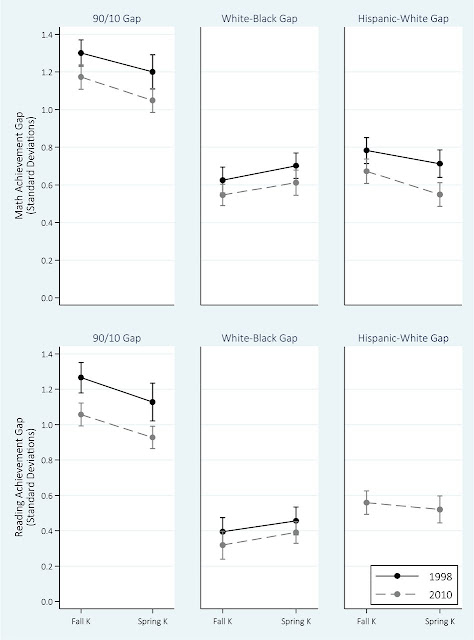Parents Are Key to Improving Basic Education
Surprising results have been recently reported regarding the achievement gap in kindergarten in the United States. Sean F. Reardon and Ximena A. Portilla report in a study published in the journal AERA Open that the kindergarten school readiness gap between poor and rich children has narrowed significantly during the past decade. This is promising. It suggests a further decline in the achievement gap in the later years of basic education. It is surprising because income inequality has significantly widened during this time period and yet, the achievement gap has done the opposite. The actual cause still needs to be determined but the best guess at the moment is what parents are doing.
Interestingly, Reardon is a co-author of another study published in the same journal that looks at how activities parents do with their children have changed during the past decade. The results show that the activities' gap between rich and poor and children has likewise decreased.
Finland treats parents in a different way. Here is one example (copied from the European Platform for Investing in Children):
Interestingly, Reardon is a co-author of another study published in the same journal that looks at how activities parents do with their children have changed during the past decade. The results show that the activities' gap between rich and poor and children has likewise decreased.
Parents can indeed have an enormous impact on basic education. Ralph B. McNeal, Jr. writes in the journal Educational Research for Policy and Practice:
One major finding, or application, is that a “rising tide lifts all boats” when it comes to parent involvement. We need to find ways to increase involvement school-wide, not just for individual children or in specific cases. This is especially important in light of what I refer to as a “spillover effect.” One clear beneficiary is those students whose parents are not involved within the school or actively discussing school-related interests and activities with their children in the home. These students would reap rewards from the spillover effect where they benefit from the parent involvement of their peers. In other words, there is a school-level effect of parent involvement independent of any one individual’s level of parent involvement. To be more succinct, children in homes with non-involved or disengaged parents would benefit by simply being in a school with high rates of parental participation. This finding documents how widespread parent involvement’s effect can be beyond the individual and points us toward a clear policy direction moving forward.A parent's engagement in the basic education of his or her child is contagious. There have been numerous comparisons made between schools in the US and those in Finland but only a few have taken notice of what Finland does for its parents. Jennifer Chait is one of the few:
 |
| Above copied from Inhabitots |
Universal child allowances are available to children under 17. The monthly payment in 2015 ranges from €95,75 for a single child to €174,27 for the fifth and each subsequent child. Single parents receive a supplement of €48.55 for each child.With this support, a parent can indeed find more time to take his or her child to a zoo, a library, or a museum.


Comments
Post a Comment